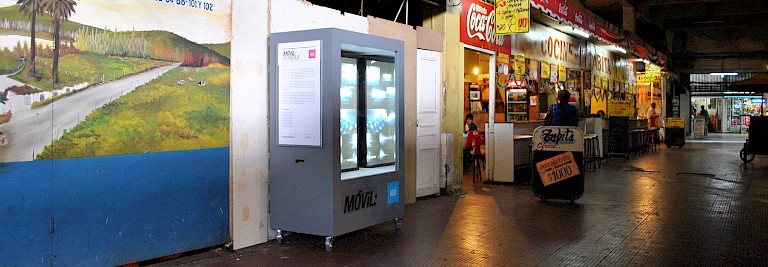



Despite the simplicity of the form (which provides the mixing of the facility in the city), these display cases take ownership of another contemporary aspect as to become contrasted with the concept that they are used: visibility for the appropriation of light. They stand out for their internal illumination, attracting all the citizen through to this interior space.
The experience encourages the viewer that amazed during his walk, and look for the object, cordially invites you to enjoy. You can understand that in the project there is the traffic between the carefree passer and captive viewer, connoisseur. MOBIL is made possible by the incorporation of visual arts through constant and playful mobility of windows in a resignified city. The windows propose a new look to the city and the art starting from a device in order to provide an experience, adding the experience with the city and its historical, architectural and everyday nuances. Also putting the appreciation of art in another context, which it moves and approaches the citizen space, narrowing the geographic and economic barriers that prevent access to art, an extremely common reality in Central and South America, where cultural centers and museums are concentrated in prime and central areas, usually in big cities. Requiring that the public realize sometimes long distance traveling in order to have a closer experience with works of art.
A paradox of the many ways to make visible today in the public space, which for that use exaggerated lighting, artificial and striking.
The project opened up notices 2013 for circulation of the displays in public spaces to young artists. The proposal has grown in recent years the project has expanded to the dissemination of artists and collectives higher trajectory work, carrying out so far about one hundred assemblies, becoming reference in Concepción and with national recognition, also participating in exhibitions, events and meetings in other regions of Chile, such as Antofagasta, Santiago, Valparaíso, Temuco. But also in other countries, including, Lima (Peru), Lausanne & Bern (Switzerland), Brussels (Belgium) and Minneapolis (USA).
All copyright belongs to Shanghai Academy of Fine Arts, Shanghai University.


